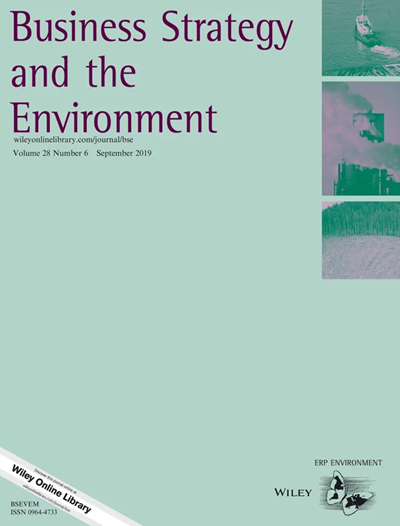One Size Still Does Not Fit All: Configuration Pathways of Environmental, Social, and Governance and Board Diversities for Higher Firm Performances Across One‐ and Two‐Tier Systems
IF 13.3
1区 管理学
Q1 BUSINESS
引用次数: 0
Abstract
There is an ongoing, albeit uncertain, debate among stakeholders regarding the benefits of environmental, social, and governance (ESG) reporting, reflected in mixed empirical findings on its impact on firm performance. In addition to this reporting, diversity (gender and cultural) on boards, which is strongly promoted at the EU level, has gained increasing importance. However, prior research offers inconsistent results and leaves significant shortcomings regarding how the interaction of this diversity with the ESG pillars affects firm performance across governance structures. This study employs a fuzzy‐set qualitative comparative analysis and Refinitiv Eikon data of 554 European Union companies from 2023 to examine configuration pathways that combine gender and cultural diversity with ESG pillars, thus influencing firm performance across different governance forms. Drawing on Upper Echelons and Contingency Theories—enhanced by insights from Resource Dependence and Social Identity Theory lenses—we show that configurations combining gender and cultural diversity with the social pillar of ESG are linked to higher performance within one‐tier firms. In two‐tier firms, this higher performance is driven by environmental and social ESG pillars combined with cultural diversity. Recognizing that there is no single governance structure in the ESG and diversity context, we offer practitioners guidance on aligning ESG and diversity strategies with their governance architectures, developing governance‐sensitive policies, increasing transparency in diversity integration, promoting ESG competency training, and providing targeted incentives.一个尺度仍然不适合所有:环境、社会、治理和董事会多样性在一级和二级系统中提高公司绩效的配置路径
关于环境、社会和治理(ESG)报告的好处,利益相关者之间正在进行尽管不确定的辩论,反映在其对公司绩效影响的混合实证研究结果中。除了这份报告之外,在欧盟层面大力提倡的董事会多样性(性别和文化)也变得越来越重要。然而,先前的研究提供了不一致的结果,并且在这种多样性与ESG支柱的相互作用如何影响跨治理结构的公司绩效方面留下了重大缺陷。本研究采用模糊集定性比较分析和Refinitiv Eikon数据,从2023年开始对554家欧盟公司进行分析,以检验将性别和文化多样性与ESG支柱相结合的配置路径,从而影响不同治理形式的公司绩效。利用上层梯队理论和权变理论,通过资源依赖理论和社会认同理论的视角,我们表明,将性别和文化多样性与ESG的社会支柱相结合的配置与一级公司的更高绩效有关。在二级公司中,这种更高的绩效是由环境和社会ESG支柱以及文化多样性所驱动的。我们认识到,在ESG和多样性的背景下,没有单一的治理结构,我们为从业者提供指导,使ESG和多样性战略与其治理架构保持一致,制定治理敏感政策,提高多样性整合的透明度,促进ESG能力培训,并提供有针对性的激励措施。
本文章由计算机程序翻译,如有差异,请以英文原文为准。
求助全文
约1分钟内获得全文
求助全文
来源期刊

Business Strategy and The Environment
Multiple-
CiteScore
22.50
自引率
19.40%
发文量
336
期刊介绍:
Business Strategy and the Environment (BSE) is a leading academic journal focused on business strategies for improving the natural environment. It publishes peer-reviewed research on various topics such as systems and standards, environmental performance, disclosure, eco-innovation, corporate environmental management tools, organizations and management, supply chains, circular economy, governance, green finance, industry sectors, and responses to climate change and other contemporary environmental issues. The journal aims to provide original contributions that enhance the understanding of sustainability in business. Its target audience includes academics, practitioners, business managers, and consultants. However, BSE does not accept papers on corporate social responsibility (CSR), as this topic is covered by its sibling journal Corporate Social Responsibility and Environmental Management. The journal is indexed in several databases and collections such as ABI/INFORM Collection, Agricultural & Environmental Science Database, BIOBASE, Emerald Management Reviews, GeoArchive, Environment Index, GEOBASE, INSPEC, Technology Collection, and Web of Science.
 求助内容:
求助内容: 应助结果提醒方式:
应助结果提醒方式:


